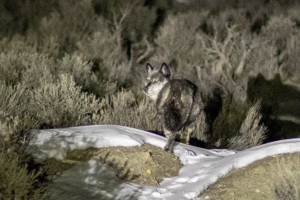Breckenridge Ski Resort unveils new plans
High Country Business Review
Crystal Peak Lodge, which has sold 45 of 46 units, fetching a price per square foot of $928, is currently under construction. Plans call for completion by Christmas of 2008. Next to the lodge, Grand Timber will build four phases of construction, the first of which will be about 30 days behind Crystal Peak’s completion. Breckenridge Ski Resort plans to relocate the Independence SuperChair within steps of the new Peak 7 base area, which is also connected by the new gondola. The existing County Road 3 will become ski terrain and move lower.
However, Peak 7 will not be the main base of the ski area; Peak 8 will be. Redevelopment plans, which will take six to 10 years, said Rick Sramek, vice president of mountain operations, include building approximately 275 units (as opposed to 161 on Peak 7). The master plan includes six to seven multi-use buildings that rise four to five stories, with shops and restaurants on the ground floors and condos on the upper floors. It will provide 325,000 square feet of residential, 48,000 square feet of skier services and 14,000 square feet of commercial space.
The first building, named 801, will be the centerpiece of Peak 8 and will include 90 ski-in, ski-out residences, ranging from studios to four bedrooms. It will also include 5,000 square feet of conference space, a bowling alley, a fitness room, an aquatics room and a media room.
The condos will cost more than Crystal Peak per square foot, said Alex Iskenderian, vice president of development. They will begin marketing them this season, and begin construction in May, then follow it with building 804, marketing in Christmas of 2008 and beginning construction in May of 2009.
“Prices are finally getting to the point in Breckenridge … that we’re building the building we always wanted, with high finishes,” Iskenderian said. “The price per square foot we’re getting here is allowing us to do this. I think this is going to take the market to the next level.”

Support Local Journalism
Last year, Breckenridge saw a record number of skier visits, and the summer seems to be shaping up to be a record year in Breckenridge as well, said Lucy Kay, chief operating officer of Breckenridge Ski Resort. She highlighted the importance of customer satisfaction, saying that’s what drives business decisions. The resort’s internal goal is to deliver extraordinary resorts and exceptional experiences.
“Our general business model is that we do real estate development to improve our resorts,” Iskenderian said. “We take real estate money and put it into the mountain.”
Sramek outlined changes on the mountain.
First, ski school operations at the base of Peak 9 will move to Upper Silverthorne, above where the ballet course used to be. The resort plans to replace A lift with a detachable lift that has a mid station to unload lower level students. They also want a 10,000 square foot building for the kids’ ski school. An open carrier gondola-type lift would reduce snowmobile traffic that currently brings equipment up the mountain for beginners. The resort also plans to replace C chair with a detachable six chair to cut the ride time in half.
Snowmaking on Peak 7 has been approved, and the resort plans to put the system in place next summer. It also plans a ski school area with a restaurant at a midway unloading station.
At the base of Peak 8, it wants to move the bottom of the Rocky Mountain SuperChair to where North Star comes into Lower Dukes to encourage upper mountain circulation rather than a bottleneck at the bottom. It also plans to run a chair that comes out of the north bowls for easy access to Peak 7 from 8. And, it will enclose the Vista Haus deck for greater utilization during inclement weather.
Long-range plans for opening Peak 6 are still in the works, as “the final piece of the puzzle,” Sramek said. It is the last area within the resort’s permit area and spans more than 400 acres, which is double the size of Peak 7 or Peak 10. Approximately 65 percent of Breckenridge Ski Resort’s visitors are intermediate, and at least half of Peak 6 is intermediate skiing, he said, with the exception of hikeable extreme skiing that “rivals anything in North America,” he said. Peak 6 gives visitors a different experience and views, as the terrain takes them above timberline.
Since the goal is to revitalize Peak 8, some locals are concerned about the impact the development and revitalization will have on town businesses and parking.
During the question and answer session, a couple of people raised concerns about parking congestion, as well as construction traffic for the next six to 10 years. While building 801 will provide 112 parking spaces,-a 22-spot reservoir, Crystal Peak has only one spot per unit-“-and it has four bedroom units. Sramek said the resort is working with the town on a long-range master plan for parking, but, in the meantime will rely on parking near the gondola and hope people take the bus more. Indeed, the Summit Stage saw a significant increase in ridership from Boreas Pass to the gondola, and he’s hoping that over time more people will take the bus. He also hopes bus ridership will relieve any greater traffic on Ski Hill Road, as there are no plans for other roads in the area, due to Cucumber Gulch and development, he said. He also said there will be construction traffic for a number of years.
Spas, skier services, dining, activities and more are planned on the mountain itself, so some are concerned that will take business away from downtown, but Kay said the whole idea is that “it all works together,” creating a bread crumb trail, so to speak, from the ski area to Main Street.
“It’s a legitimate concern,” Sramek said, “but the center of Breckenridge has a lot of energy there, and it’s tough to compete with that.”
Rick Hague, of the Breckenridge Development Advisory Committee, said there’s a lot of concern that retail and restaurants on the mountain will take away from downtown business, but the concern is beginning to recede.
The biggest issue seems to be what will happen with north Main Street, since it has a lot more residential and nondescript store fronts. Currently, LaCima Mall has an entire block of residential between it and other stores, and people don’t seem to want to walk one block from Jefferson to LaCima, so it has historically had problems getting customers, Hague said.
“(Research has) shown that ground floor residential units are the kiss of death in getting people to walk to town,” he said.
Historic Main Street, which is where the energy is, starts at Main and Lincoln and goes south. However, north of that, there are empty lots and one-story buildings with residential units.
“How do you get people in the (gondola) parking lots to Main Street ” what incentive do we give to walk a quarter mile where they can spend money?” he said.
The answer is creating shops along the way, but there doesn’t seem to be a specific plan on how to do that. The town did pass an ordinance prohibiting ground floor residential units in the area, and it’s looking at limiting office space in the north end of the area. The town will also build bridges over the Blue River to Main Street as part of its restoration. Still, people need an incentive to cross the river, he said.










